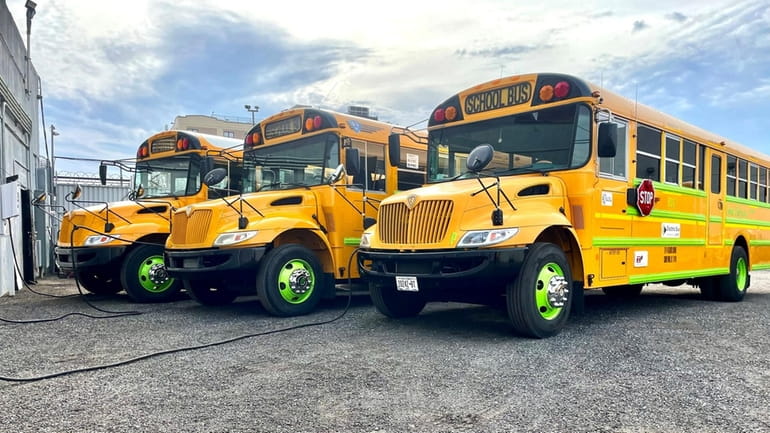Propane can help NY reach its school bus clean-energy mandates

New York State has mandated that by 2035 all school buses in the state be zero-emission, like the electric buses above.
Credit: Logan Bus Co. Inc.
A group of Long Island state senators and Assembly members recently asked Gov. Kathy Hochul to either fully fund or rescind the state mandate that all new buses sold in the state be zero-emission by 2027 and every bus on the road be zero-emission by 2035. The reason? The exorbitant cost of electric buses, which run upward of $450,000, and the impact that will have on taxpayers. Though electric buses run clean and quiet, their extremely high costs place big burdens on school district budgets, which can mean less money for what matters most: educating children.
The smart move would be to include ultra-low-emission propane buses as part of the mandate. Propane can drive both environmental and fiscal responsibility from the statehouse down to individual districts.
It would cost as much as $20 billion to transition all 45,000 of New York’s school buses to electric, according to some estimates. It’s doubtful the state could fully fund that amount, though some funding is being made available for electric buses through the federal Clean School Bus Program.
Time is quickly passing for diesel school buses. The fumes, noise, and high maintenance costs to keep diesel “clean” have created an unacceptable situation for students. Repeatedly exposing them to that thick, black smoke is irresponsible.
Propane buses virtually eliminate that smoke, and dramatically reduce nitrogen oxides and carbon dioxide, which can lead to ailments like asthma, bronchitis, and other respiratory problems.
The operating cost of propane buses is half the cost of diesel buses. More significantly, a school district can purchase three propane buses for every one electric bus. With virtually every school district in New York managing ever-tightening budgets, the savings provides the best of both worlds — cleaner air and cost savings.
Plus, it takes mere minutes to refuel a propane bus, compared to hours for recharging an electric bus.
Propane buses are better for our children, better for our communities, and better for the environment. Everyone deserves access to clean, affordable and reliable energy, as well as clean air to breathe. Propane provides all of that right now and is easily implemented.
The “electrify everything” school bus mindset contains inconsistencies. Some 60% of the U.S. electric grid is powered by coal and natural gas, so if one considers the whole emissions equation, propane buses are simply cleaner. As demand on the grid increases, in part due to the increase of electric passenger vehicles, so will reliance on coal and natural gas, at least in the short term, leading to greater environmental impact, especially in rural areas where power plants are often located.
More than 22,000 propane school buses operate nationwide, transporting 1.3 million kids to school in 49 states. In New York, that includes 243 buses used by school districts. Seven school districts in Suffolk and Nassau counties currently utilize about 60 propane school buses to transport students.
Propane buses have a range of up to 400 miles on a single tank, compared to 130 miles for a fully charged electric bus, important in rural areas and for after-school activities, especially on frigid days; electric buses lose up to a third of their range when temperatures drop below 25 degrees Fahrenheit.
All New York communities stand to benefit substantially from propane bus implementation. By embracing its benefits, Hochul and state lawmakers will ultimately achieve the twin goals of environmental and fiscal responsibility.
This guest essay reflects the views of Bill Overbaugh, executive director of the New York Propane Gas Association.
